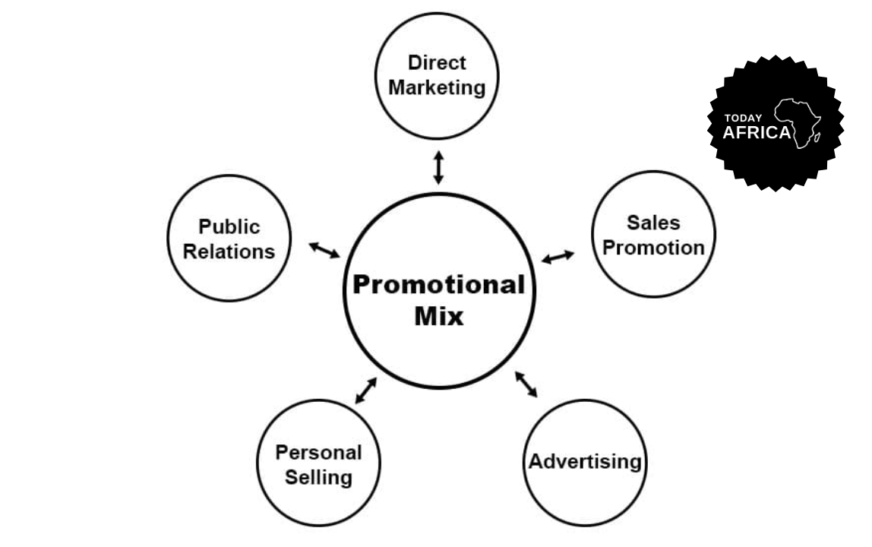Strategic marketing management is carrying out your business mission through particular and strategic processes to maximize your present marketing strategy.
It is, in essence, the process of making strategic decisions inside a marketing plan to improve that plan.
This means each action step within a strategic marketing management process should be analyzed to improve before making the next step in your current plan.
In this article, we’ll dive deep into what it really means and why it’s crucial for your company’s growth.
Why is Strategic Marketing Management Important?
Strategic marketing management can improve your company’s overall efficiency. Good strategies provide you with the clarity to make good business decisions. In good strategic marketing, brands can identify their budget, target audience, and messaging, and track performance. All these things contribute to efficiency and reduce the wastage of precious resources, allowing them to make better business decisions.
Understand your market better
The research required to apply strategic marketing management successfully will eventually result in a deeper grasp of your specific market. You will learn about domestic and international markets, competition, and market trends.
Identify your strategic direction
It helps you make more innovative judgments that link your strategy with your company’s mission.
Small actions, big results
Strategic marketing management, when done right, may deliver some remarkable outcomes for your company. As a result, your company’s budget may be better managed, and its overall longevity may rise.
What are the Benefits of Strategic Marketing Management?

1. Provides a competitive advantage
Strategic marketing allows your company to gain an edge over its competition and establish its brand presence in the market against the existing players and new entrants. It demonstrates how unique your brand is.
Also Read: How to Choose the Right Business
2. Better understanding of the market
The research involved in properly implementing strategic marketing management will lead to a better understanding of your given market. Research regarding domestic and international markets, competition, and market trends will need to be conducted.
3. Supports marketing communication
The marketing communications strategy is fundamental as a means to reach out to consumers and get their attention. Successful marketing communications are critical to generating consistent sales. This strategy starts by identifying the right consumers and how your company can satisfy their needs.
4. Establish marketing budgets
The goal of budgets is to promote business success. Strategic marketing allows you to spend your marketing budget on marketing activities with a high return on investment (ROI). Using marketing budgets most effectively can achieve not only marketing goals but business goals too.
5. Improves brand awareness
Brand awareness is the ability of consumers to recognize and remember a company. The more familiar audiences are with a brand’s logo, messaging, and products, the greater your brand awareness will be. The process of spreading a message, growing an audience, and establishing high brand recognition increases within a given target market. Improve the social media presence by posting more content and ensuring the content is high quality and resonates with the customers.
6. Maximized ROI
Return on investment (ROI) is the ultimate measure of marketing success. Strategic marketing ensures that your efforts are targeted at the right audience, with the right message, at the right time. This precision increases the likelihood of a higher ROI on your marketing investments.
3 Phases of Strategic Marketing Management
Strategic marketing management involves several phases that help your organization plan and execute its marketing efforts effectively. While the specific phases may vary slightly depending on the source, they generally encompass three key stages:
1. Planning phase
- a. Market research and analysis: This initial phase involves gathering and analyzing data about the market, customers, competitors, and industry trends. It helps in understanding the current landscape and identifying opportunities and threats.
- b. Setting objectives: Once armed with market insights, you set clear and measurable marketing objectives. These objectives should align with your business goals and provide a sense of direction for the marketing efforts.
- c. SWOT analysis: Conducting a SWOT analysis (Strengths, Weaknesses, Opportunities, Threats) helps identify internal strengths and weaknesses and external factors that could impact your company.
2. Implementation phase
a. Strategy development: With a solid understanding of the market and clear objectives, organizations develop marketing strategies. These strategies encompass decisions on product development, pricing, distribution channels, and promotional activities.
b. Marketing mix: In this phase, you work on the marketing mix, often referred to as the 4Ps:
- Product: Decisions on product features, quality, and design.
- Price: Determining the pricing strategy based on market research and competitive positioning.
- Place: Selecting the right distribution channels to reach target customers effectively.
- Promotion: Planning and executing promotional activities, which could include advertising, public relations, and digital marketing.
c. Budget allocation: Allocating resources, including budgets and manpower, to various marketing activities is crucial. You must prioritize your spending to maximize the impact of your strategies.
3. Evaluation and control phase
- a. Implementation monitoring: Continuous monitoring of the marketing strategies and tactics is essential. This involves tracking key performance indicators (KPIs) to ensure that the plan is being executed effectively.
- b. Performance analysis: Regularly assess the performance of marketing activities against the defined objectives. Analyze what’s working and what’s not and make necessary adjustments.
- c. Adaptation: One of the core principles of strategic marketing management is the ability to adapt to changing market conditions. Based on the analysis of performance and feedback, organizations should be prepared to adjust their strategies and tactics as needed.
- d. Feedback loop: Establish a feedback loop between the evaluation phase and the planning phase. Lessons learned from the evaluation phase should inform the planning of future marketing strategies.
The Process of Strategic Marketing Management
Strategic marketing management is a systematic approach that involves careful planning and execution to achieve long-term business objectives. Here’s a structured process to help you implement it effectively:
1. Market analysis and research
Understanding the market is the foundation of strategic marketing. Start by conducting comprehensive market research to gain insights into your industry, target audience, and competitors.
This involves:
- Market segmentation: Identify distinct market segments based on demographics, behavior, and needs.
- Competitive analysis: Analyze your competitors’ strengths, weaknesses, strategies, and market positioning.
- Trend analysis: Stay informed about industry trends, technological advancements, and changes in consumer preferences.
- SWOT analysis: Evaluate your own strengths, weaknesses, opportunities, and threats.
2. Set clear objectives
Clearly defined objectives provide direction and purpose.
Based on your research, establish clear and specific marketing objectives. These objectives should be aligned with your overall business goals. Consider objectives like:
- Market share growth: Aim to increase your market share within a specific timeframe.
- Revenue generation: Set revenue targets and sales growth objectives.
- Brand awareness: Enhance brand recognition and perception among your target audience.
- Customer acquisition: Specify the number of new customers you want to acquire.
3. Develop a strategic marketing plan
A well-crafted plan turns objectives into actionable steps.
So, create a comprehensive marketing plan that outlines the strategies and tactics needed to achieve your objectives. Elements of your plan should include:
- Target audience: Define your ideal customers and understand their needs and preferences.
- Value proposition: Clearly articulate what sets your product or service apart from competitors.
- Marketing mix: Determine your product or service offerings, pricing strategy, distribution channels, and promotional activities.
- Content strategy: Plan your content creation and distribution strategy, including blog posts, social media, email marketing, and more.
- Budget allocation: Allocate resources effectively to support your marketing activities.
4. Implementation and execution
Execution is where the plan comes to life. Put your marketing plan into action. This involves:
- Team coordination: Ensure that your marketing team understands their roles and responsibilities.
- Campaign execution: Launch and manage marketing campaigns, advertising, content creation, and other initiatives according to your plan.
- Marketing collateral: Develop necessary marketing materials, such as brochures, websites, and social media profiles.
- Technology and tools: Utilize marketing tools and technology to streamline processes and track performance.
5. Monitoring and analysis
Continuous assessment is vital for improvement. So regularly monitor and analyze the performance of your marketing efforts:
- Data collection: Utilize analytics tools to gather data on website traffic, conversion rates, social media engagement, and more.
- KPI tracking: Measure key performance indicators (KPIs) related to your objectives.
- Feedback gathering: Seek feedback from customers, sales teams, and stakeholders.
- Competitor tracking: Keep an eye on competitor activities and assess their impact on your strategies.
6. Adapt and refine strategies
Flexibility is crucial in an ever-changing market. Based on the data and insights gathered during monitoring, be prepared to adapt and refine your marketing strategies:
- Adjust tactics: Modify tactics that are not delivering the desired results.
- Optimize budget: Allocate resources to areas showing the highest return on investment.
- Experiment: Be open to trying new marketing channels and approaches.
- Leverage successes: Identify and expand on strategies that are working exceptionally well.
7. Regular review and reporting
Transparency and accountability ensure ongoing improvement. Schedule regular review meetings to assess the progress of your strategic marketing management:
- Reporting: Prepare concise reports summarizing key performance metrics, changes in market dynamics, and the impact of your strategies.
- Feedback loop: Encourage open communication within your marketing team and with other departments.
- Documentation: Keep records of what worked and what didn’t, facilitating informed decision-making in the future.
6 Elements of Strategic Marketing Management
1. SWOT analysis

A SWOT analysis is the foundation upon which successful strategic marketing management is built. It’s a simple yet powerful tool for assessing your business’s internal strengths and weaknesses and external opportunities and threats:
- Strengths: These are your internal advantages, the things your business does exceptionally well. For example, if your company has a strong in-house team of experts, this can be a strength that you can use to create thought leadership content.
- Weaknesses: Acknowledging your weaknesses is equally important. It helps in addressing internal issues before they become roadblocks to your success. For instance, if your company struggles with slow response times to customer inquiries, this is a weakness that needs to be improved to enhance customer satisfaction.
- Opportunities: External opportunities are the trends or conditions in the market that you can capitalize on. For instance, if you notice a growing trend toward eco-friendly products, you can adjust your product line and marketing messages accordingly.
- Threats: Threats are external factors that can hinder your business. For example, if new regulations are looming that could affect your industry, being aware of these threats helps you plan for compliance and adapt your marketing strategy accordingly.
2. Target market
Knowing your target market is fundamental to effective marketing management. Because everyone is not a market; your market is the people who are most likely to be interested in your products or services. Here’s how to approach it:
- Demographics: Factors like age, gender, location, income level, and education come into play. For instance, if you sell high-end fashion, your target market might be affluent individuals aged 25-45.
- Psychographics: Go deeper into your audience’s mindset to know their values, lifestyles, interests, and behaviors. For example, if you offer adventure travel packages, your target market might be thrill-seekers who value experiences over luxury.
- Needs and pain points: Understand what problems your target market faces that your product or service can solve. For instance, if you offer software solutions, your target market might be businesses struggling with inefficient manual processes.
3. Marketing mix
The marketing mix refers to the four Ps: Product, Price, Place, and Promotion. This framework guides how you deliver your product or service to your target market:
- Product: This is not just the physical item but also its features, design, and packaging.
- Price: Determine the pricing strategy that matches both your costs and what your target market is willing to pay. For example, if you’re offering premium quality, a higher price point might be justified.
- Place: Decide how and where your product will be available to customers. If your target market shops primarily online, ensure a strong online presence.
- Promotion: This involves all the ways you communicate your product or service to your target market – including advertising, public relations, sales promotions, and digital marketing. Your promotional efforts should resonate with your target audience and be consistent with your brand message.
4. Marketing communications
This is essential for conveying your message to your target market. It’s not just about broadcasting information but creating a connection. Here are key components:
- Branding: Your brand identity should be consistent across all communication channels.
- Content marketing: The goal is to provide valuable and relevant content to your audience. Whether it’s blog posts, videos, or social media updates, content should engage and inform.
- Advertising: Paid advertising through various channels, such as Google Ads or social media ads, helps reach a broader audience.
- Public relations: Manage your company’s image and reputation through media relations, press releases, and community involvement.
5. Marketing research
The goal is to gather, analyze, and interpret information about a market, including data about your target audience and competition. This effort informs your strategy and decision-making.
- Customer surveys: Get feedback from your existing customers to better understand their needs, preferences, and pain points.
- Competitor analysis: Study your competitors to identify gaps in the market or areas where you can differentiate your offering.
- Market trends: Stay informed about industry trends and changes in consumer behavior.
- Data analytics: Use tools and software to analyze customer data and track the performance of your marketing efforts.
6. Marketing metrics
Measuring the effectiveness of your marketing efforts is crucial. Some metrics to measure include:
- Conversion rate: The percentage of visitors who take a desired action, such as making a purchase or signing up for a newsletter.
- Customer acquisition cost (CAC): The cost of acquiring a new customer.
- Customer lifetime value (CLV): The predicted revenue a customer will generate throughout their relationship with your business.
- Return on investment (ROI): The ratio of the net profit generated from marketing efforts to the cost of those efforts.
- Website traffic: The number of visitors to your website and their behavior while on it.
Challenges of Strategic Marketing Management
1. Changing market conditions
Market conditions are never static. They can shift rapidly due to various factors, such as consumer preferences, societal changes, or global events (as we’ve witnessed with the COVID-19 pandemic). This dynamism can make it challenging to craft a strategy that remains relevant.
Solution: Regular market research and trend analysis are essential. Stay agile and be ready to pivot your strategies when necessary. Don’t let your plan become a rigid framework; view it as a flexible guide.
2. Technological advances
Technology evolves at an astonishing rate. Keeping up with the latest tools and platforms can be overwhelming. Yet, not leveraging technology can leave you at a significant disadvantage in terms of efficiency and reach.
Solution: Continual Learning is key. Stay updated with technological trends and invest in tools that align with your marketing goals. Automation and data analytics can be game-changers in staying competitive.
3. Competitive rivalry
The business world is fiercely competitive. New entrants and established players are constantly vying for market share. Standing out amidst this competition is no easy feat.
Solution: Focus on Differentiation. Develop a unique value proposition and branding strategy. Provide exceptional customer experiences that create loyal advocates for your brand.
4. Economic uncertainty
Economic downturns and uncertainties can disrupt even the most well-thought-out marketing plans. Consumer spending habits change and businesses may need to tighten their belts.
Solution: Diversify and Be Financially Prudent. Maintain a diverse customer base to reduce dependency on a single market segment. Create contingency plans for economic downturns, and always keep an eye on your budget.
References:
- https://indeed.com/career-advice/career-development/what-is-strategic-marketing
- https://airfocus.com/glossary/what-is-strategic-marketing-manageent/
















